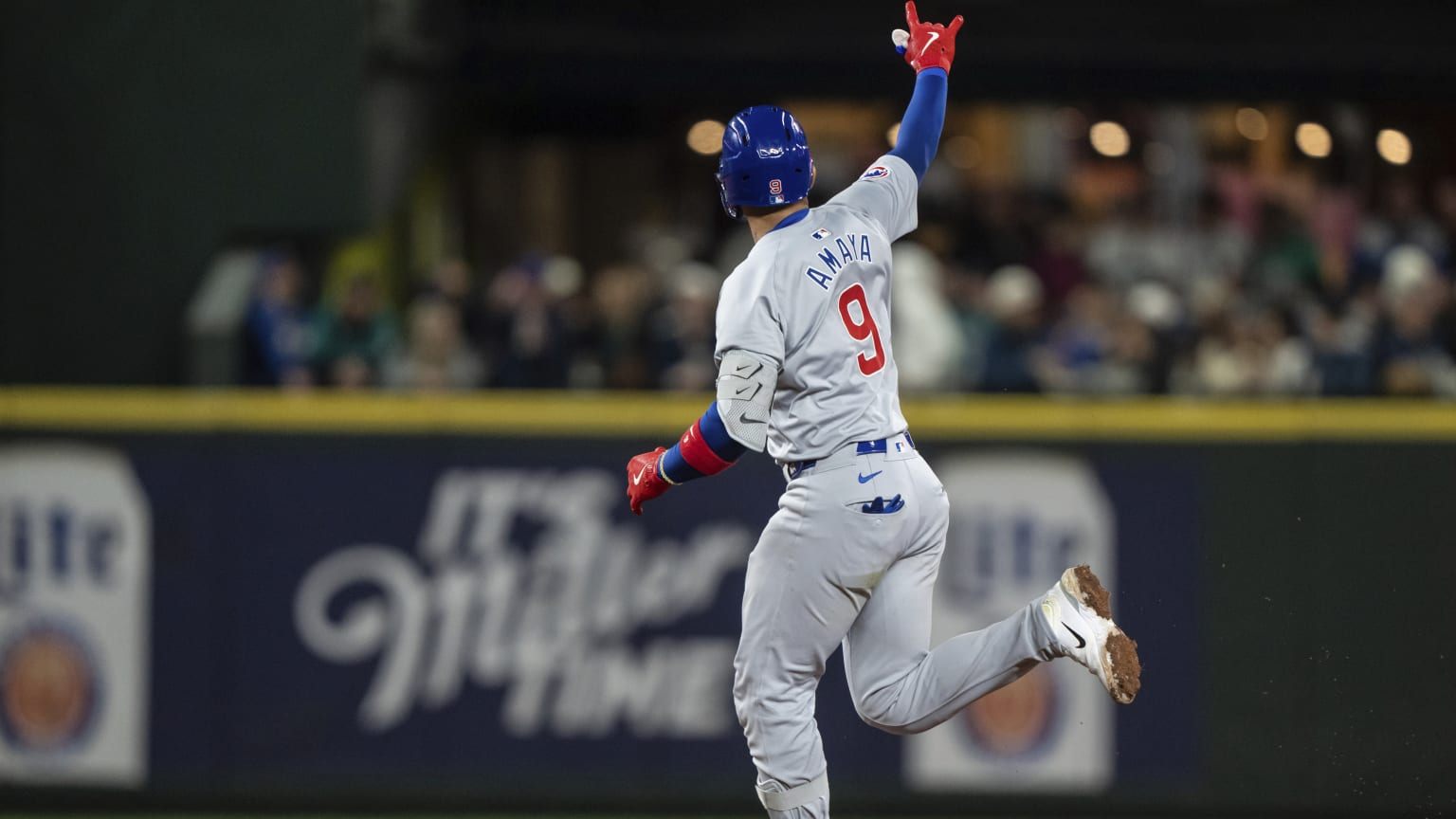- Cubs Superfans
- Posts
- Home Run Heroes: Cubs’ Solo Shots Seal the Deal
Home Run Heroes: Cubs’ Solo Shots Seal the Deal
Suzuki, Busch, and Amaya Ignite as Cubs Outslug Mariners

Superfan Mark “Wow, we needed that win, that felt good!”
The Leadoff Man
The Cubs truly brought their firepower to the Emerald City, showcasing a remarkable display of solo home runs and resilient pitching to clinch a 4-1 victory against the Mariners. Seiya Suzuki, Michael Busch, and Miguel Amaya each delivered pivotal solo homers. Amidst a tough road trip, these standout moments highlight the Cubs' ability to fight during a long road trip. Christopher Morel made great plays at 3rd base.
Check up the breakdown on the big hits, decode Bellinger's ongoing struggles, and uncover the potential hidden in Nico Hoerner's early stats.
Power Surge and Steady Pitching
In an exciting display, Seiya Suzuki, Michael Busch, and Miguel Amaya each hit solo home runs, propelling the Cubs to a 4-1 victory in Seattle.
What a night for long balls in Seattle! The Cubs showcased their power-hitting prowess as Seiya Suzuki, Michael Busch, and Miguel Amaya lit up the scoreboard with crucial solo home runs. Suzuki got the ball rolling with a third-inning blast that set an early tone. Busch followed suit with a seventh-inning homer that kept the momentum firmly with the Cubs. But it was Miguel Amaya who sealed the deal, launching a decisive solo shot in the eighth inning to extend the lead to 4-1.
These homers weren't just spectacular; they were timely. Each one added not only to the scoreboard but also to the team's energy, proving once again how crucial strategic hitting is to game dynamics. Pitching also played a key role, with Imanaga turning in a gritty performance, managing the game skillfully despite not having his sharpest stuff. This blend of power at the plate and steadiness on the mound is what every manager dreams of, and it was on full display in Seattle. The Cubs’ ability to "tread water" during a hard road trip to San Diego and Seattle culminated in a night where the long ball told the story.
A Closer Look at Bellinger's Struggles
Cody Bellinger's rBAT+ of 39, well below the league average of 100, and other advanced Metrics show his struggles but he should be able to bounce back soon.
Cody Bellinger's performance this season is far from what Cubs fans—and certainly Cody himself—would hope for. Let's break down a key metric here: rBAT+. Standing for "runs Batting," this number measures a player's ability to produce runs compared to the league average, which is always set at 100. So, a rBAT+ of 100 means you're exactly average; above 100, you're better than average; below 100, well, it's not great news. Bellinger's rBAT+ sits at 39, which means he’s producing 61% fewer runs than the average player this season—a concerning statistic for anyone in the batter's box.
Digging deeper, his isolated power (ISO), which highlights a hitter's raw power by measuring how often a player hits for extra bases, tells a bit of a different story. While Cody’s overall hits are down, when he does connect, he’s hitting with decent power. With a BABIP of just .179, Bellinger’s number is well below the league average of .303, suggesting he’s been hitting into some serious bad luck or making weak contact.
Typically, a low BABIP like this could mean that a player's hits are finding gloves more than gaps, but it might also indicate problems like poor timing or issues with hitting mechanics. Given Bellinger's capabilities, this abnormally low BABIP could be a signal that he’s due for a turnaround—after all, such extremes often balance out over time.
Hidden Depths in Hoerner's Stats
Nico Hoerner: Unlucky Start with a Silver Lining, Despite a slow start, His low BABIP suggests he’s had more than his fair share of bad luck.
Nico Hoerner’s early stats might not jump off the page, but there’s an interesting story unfolding. Let’s focus on his BABIP—Batting Average on Balls In Play. This metric reflects how often a ball in play turns into a hit, excluding home runs. Nico’s BABIP is unusually low, indicating that he's been quite unlucky with where his balls are landing—often straight into the gloves of defenders.
Now, BABIP tends to even out over time; the average usually sits around .300. Nico’s is below this, so we can expect some positive regression as the season continues. This means more of those balls in play should start dropping for hits.
So, while the batting average is low now, don’t be fooled. Nico’s approach at the plate is solid—he’s seeing the ball well and drawing walks, which keeps his on-base percentage healthy. If he maintains this discipline and his luck normalizes, we should see his numbers improve significantly.

Superfan Mark

Reply